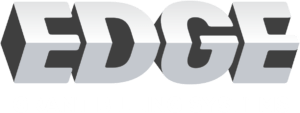
Est. Reading: mins

Knowing how to create a comprehensive and accurate report is crucial for successful grant compliance. In this step-by-step guide, we will walk you through the process of crafting a grant billing report that not only meets but exceeds your grantor’s expectations. From the cover page to the lead schedules, detail schedules, and supporting documents, each section plays a role in presenting a clear and transparent overview of your grant expenses. Let’s explore how to create a financial accountability and compliance report for your organization.
The key to creating a successful grant billing report is understanding and meeting the specific requirements set forth by the grantor. The report should include sections such as a cover or summary page that outlines the current month, year-to-date, and the remaining balance by expense category. It should also have lead schedules that summarize expenses at various levels and detail schedules that support the total amount with itemized lists.
Preparing a grant billing report involves organizing a variety of information and documents. This includes lead schedules that summarize expenses at different levels, such as staff expenses at both the employee and budget line levels, direct program expenses at the expense category level, and indirect expenses. Detail schedules should support the total amount with itemized lists, including payroll registers for staff expenses and transaction records from the General Ledger for direct program expenses. Supporting documents like approved timecards for staff expenses and copies of invoices with proof of payment for direct program expenses are also necessary.
With the grant billing report, the Cover or Summary page provides a snapshot of the financial status. It should feature the current grant budget, current month’s expenses, year-to-date totals, and the remaining balance by expense category. This page sets the stage for the reader to quickly grasp the financial picture of the grant and sets the tone for the rest of the report.
The Cover or Summary page serves as a roadmap, guiding the reader through the key financial figures of the grant, ensuring they understand the distribution of expenses across various categories and see the overall financial health of the grant at a glance.
Another aspect is ensuring that the information is organized in a logical manner, making it easy for the reader to navigate the report. By strategically outlining the current month’s expenses, Year to Date totals, and remaining balance by expense category, the Cover or Summary page provides a comprehensive overview that sets the foundation for the rest of the report.
Lead schedules provide a summarized breakdown of expenses, distinguishing between staff expenses, direct program expenses, and indirect expenses. This detailed categorization ensures transparency and accountability, enabling grantors to clearly see how allocated funds are being utilized throughout the reporting period.
Creating a comprehensive grant billing report requires detailed tracking of expenditures and revenues. This involves breaking down staff expenses at both the employee and budget line levels, direct program expenses by expense category, and indirect expenses. Each line item in the detail schedules should be supported by tangible documentation, such as payroll registers for staff expenses and invoices for direct program expenses, to validate the accuracy of the reported figures.
Lead schedules play a key role in presenting a clear picture of grant expenditures, providing a summary that leads to a better understanding of how funds are being utilized. By properly detailing expenditures and revenues within these schedules, grant billing reports can effectively demonstrate compliance with grant guidelines and regulations, ultimately enhancing transparency and trust with grantors.
Your grant billing report’s Detail Schedules provide a breakdown of expenses to justify the total amounts listed in the Lead Schedules. This section should offer a comprehensive view of each expense category, staff expenses, and direct program expenses, supporting the overall financial picture presented in the report.
The Detailed Schedule provides a comprehensive breakdown of expenses, itemizing each cost incurred during the reporting period. For staff expenses, this may involve providing a payroll register detailing amounts paid to employees. For direct program expenses, transactions from the general ledger should be included to ensure transparency and accuracy in reporting.
Breaking down costs in the Detail Schedules allows for a clear linkage between the granular data and the summarized amounts in the Lead Schedules. This linkage ensures that each line item in the report aligns with the overall amounts presented, providing a coherent narrative of how funds are being utilized.
This connection between the detailed and summarized sections is vital for transparency and accountability to the grantor, enabling them to track and verify the use of funds in accordance with the grant agreement.
After compiling the lead and detail schedules for your grant billing report, supporting documents need to be gathered to provide evidence of the expenses incurred. The types of supporting documentation may vary depending on the nature of the expenses. For staff expenses, this could include payroll registers and approved timecards. For direct program expenses, copies of invoices and proof of payment are crucial to substantiate the transactions. The accuracy and completeness of these supporting documents are paramount in ensuring compliance with grant requirements.
| Staff Expenses | Payroll registers and approved timecards |
| Direct Program Expenses | General Ledger Transactions (Vendor Accounts Payable and Journal Entries), Copies of invoices and proof of payment |
With the multitude of supporting documents required for a grant billing report, organization and presentation are key to conveying transparency and accountability. The information should be arranged in a clear and logical manner, making it easy for the grantor to review and understand. It is advisable to label each document properly and provide a brief description to indicate its relevance to the report. Additionally, maintaining a consistent formatting style throughout the supporting documents enhances the overall professionalism and credibility of the report.
Types of supporting documentation play a critical role in substantiating the expenses reported in a grant billing report. Payroll registers, timecards, invoices, and proof of payment serve as evidence of the financial transactions conducted. By following best practices for organization and presentation, grant recipients can ensure that their supporting documents are well-structured and easily accessible for review. This level of attention to detail demonstrates a commitment to compliance and accuracy in financial reporting should alleviate any payment delays which is more important to any organization that relies on grants.
On the final stage of creating your grant billing report, it is crucial to run thorough proofreading and compliance checks to ensure accuracy and adherence to grantor requirements. Despite the complexity of the report, meticulous attention to detail is important to avoid errors that could lead to delays in reimbursements or jeopardize future funding opportunities. Pay close attention to each section, from the cover page to the supporting documents, verifying that all information is consistent and accurate.
For submitting the report to the grantor, follow the specific submission instructions provided by the funding agency. A timely submission is crucial to maintain a positive relationship with the grantor and ensure continued support for your projects. Provide all required documents, including lead schedules, detail schedules, and supporting documents, as outlined in the grant agreement. Remember to keep a copy of the submitted report for your records.
Edge Grant Billing Systems is a software platform that can assist with grant allocation by providing tools and features to help organizations to be cost-effective in tracking and managing their grant finances. Some specific ways that Edge Grant Billing Systems will help with grant allocation include:
By providing tools and features to help organizations track and manage their grant finances, Edge Grant Billing Systems can assist with grant allocation by enabling organizations to use their grant funds effectively and efficiently to achieve their intended goals.
Summing up
Creating a grant billing report requires careful attention to detail and organization. By including a cover page with necessary financial information, lead schedules that summarize expenses, detailed schedules that provide itemized lists, and supporting documents such as payroll registers and invoices, you can ensure that your report meets grantor expectations.
Consider using modern software platforms for managing grant allocations, such as Edge Grant Billing Systems, which will automate the grant allocation process. This includes tracking grant-related expenses and accurately and compliantly reporting on the grant finances.
